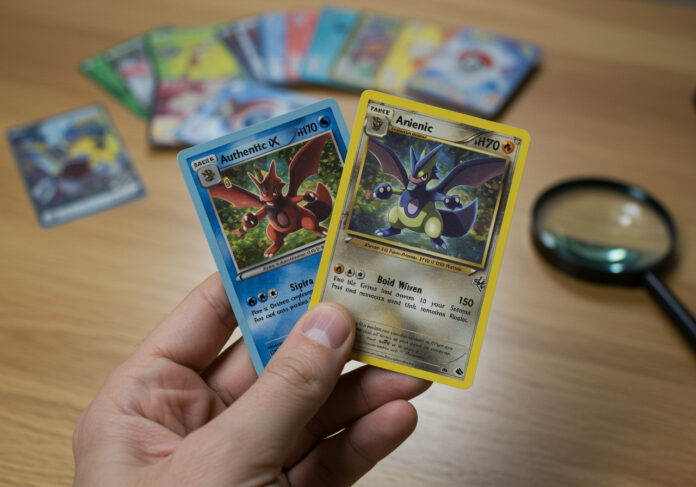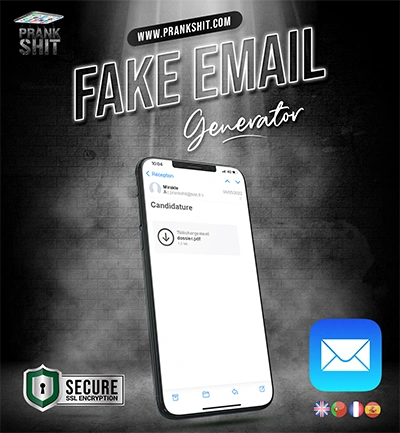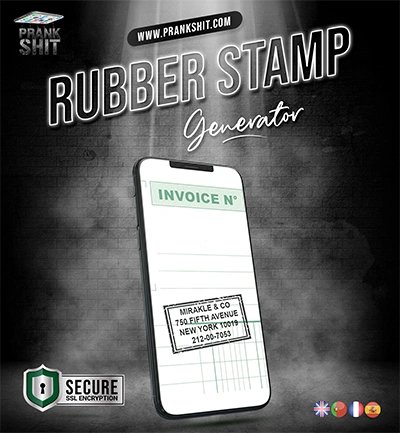Pokémon is more than nostalgia—it’s a billion-dollar industry. And wherever there’s money, there are fakes. The Pokémon Trading Card Game has become one of the most counterfeited collectibles in the world, with fake Pokémon cards flooding online marketplaces and even some retail stores.
Whether you’re a new collector hunting for your first holographic Charizard or a seasoned Pokéfan building a competitive deck, knowing how to tell if a Pokémon card is fake can save you money, embarrassment, and major regret. The counterfeit card market has grown sophisticated, but authentic Pokémon cards have specific characteristics that are difficult to replicate perfectly.
Fake Pokémon cards aren’t just a financial loss—they can also be unsafe. Many counterfeit cards contain harmful chemicals and low-quality materials that authentic cards don’t have. Plus, if you’re planning to play in tournaments or sell your collection later, fake cards are worthless.
This guide will teach you seven reliable methods to spot fake Pokémon cards, protect your investment, and build confidence in your collecting journey. Let’s dive into the telltale signs that separate real treasures from expensive disappointments.
Check the Font and Spelling
One of the easiest ways to spot fake Pokémon cards is by examining the text carefully. Counterfeiters often struggle to replicate the exact fonts used by The Pokémon Company, and quality control on fake cards is notoriously poor.
Start by looking at the Pokémon’s name at the top of the card. Authentic Pokémon cards use a specific font that’s consistent across all official releases. Fake cards frequently use similar but slightly different fonts that look “off” when compared side by side with real cards. The letters might be too bold, too thin, or have incorrect spacing.
Spelling errors are another dead giveaway. If you see “Pockemon” instead of “Pokémon,” “Watter” instead of “Water,” or any other obvious typos, you’re looking at a fake. Real Pokémon cards go through rigorous quality control processes that would catch these mistakes.
Pay special attention to the accent mark in “Pokémon.” Many fake cards either omit this entirely or use the wrong type of accent. The authentic mark is an acute accent (é), not a grave accent (è) or other variation.
Check the attack names, Pokédex entries, and copyright information at the bottom of the card. Authentic cards have consistent capitalization, proper grammar, and accurate copyright symbols. Fake cards often have random capitalization errors, missing punctuation, or incorrect copyright dates.
Feel the Card Texture and Thickness
Real Pokémon cards have a distinctive feel that’s hard to replicate. The Pokémon Company uses high-quality cardstock with specific thickness and texture properties that counterfeiters struggle to match exactly.
Authentic Pokémon cards feel sturdy but not overly thick. They have a smooth, matte finish that isn’t glossy or sticky to the touch. When you run your finger across the surface, it should feel consistent and professional. The card should have some flexibility without feeling flimsy or paper-thin.
Fake Pokémon cards often feel wrong in several ways. They might be too glossy, giving them a cheap, plastic-like appearance. Some fakes are printed on paper that’s too thin, making them feel fragile and bendable. Others are too thick, feeling more like cardboard than a trading card.
Another texture test involves the card’s edges. Real Pokémon cards have clean, precisely cut edges that feel smooth when you run your finger along them. Fake cards often have rough, uneven edges or show signs of poor cutting quality.
The surface texture is also important for holographic cards. Real holographic Pokémon cards have a specific type of foil that creates the holographic effect. Fake holographic cards might use cheaper foil that feels different or looks less vibrant than authentic cards.
Look at the Back Color and Design
The back of a Pokémon card is one of the most reliable ways to check authenticity because it’s standardized across all real cards and difficult for counterfeiters to replicate perfectly.
Authentic Pokémon cards have a specific shade of blue on the back—a deep, royal blue that’s remained consistent since the game’s inception. This blue should be vibrant but not overly bright or neon. Many fake Pokémon cards get this color wrong, appearing too light (almost purple), too dark (nearly navy), or too bright (electric blue).
The Pokéball design in the center should be crisp and properly proportioned. On real cards, the Pokéball has clean lines, proper shading, and correct color placement. The red should be a true red, not orange or pink, and the white sections should be pure white, not cream or gray.
Look closely at the border around the edge of the card back. Real cards have a consistent yellow border that’s the same width all around. Fake cards might have borders that are too thick, too thin, or uneven in places.
The overall print quality on the back should be sharp and clear. If the colors look washed out, blurry, or if you can see individual dots from the printing process (called dot matrix), you’re likely looking at a fake card.
Compare the suspected fake with a known authentic card if possible. Place them side by side and look for any differences in color saturation, design elements, or overall quality.
Perform the Light Test
The light test is one of the most effective methods for detecting fake Pokémon cards, and it’s easy to perform with just a bright light source.
Hold your Pokémon card up against a bright light, such as a lamp, flashlight, or even sunlight from a window. Look at how much light passes through the card. Authentic Pokémon cards have a black layer in the middle of the cardstock that blocks most light from passing through. You might see a very faint glow around the edges, but the center of real cards should remain mostly opaque.
Fake Pokémon cards often fail this test dramatically. Many counterfeit cards are printed on regular paper or thin cardstock that allows significant amounts of light to pass through. If you can clearly see the light through the card or make out shapes on the other side, it’s almost certainly fake.
Some higher-quality fakes might pass the basic light test, but they still won’t match the exact opacity of real cards. Real Pokémon cards block light in a very specific way due to their multi-layer construction. Even if a fake card blocks some light, the pattern of light transmission often looks different from authentic cards.
This test is particularly useful when buying cards online. If a seller can’t or won’t provide a photo of the card held up to light, that’s a red flag. Legitimate sellers of valuable cards should be willing to provide this type of verification photo.
Examine Holographic Patterns and Effects
Holographic Pokémon cards are among the most counterfeited because they’re valuable and eye-catching. However, the holographic effects on real cards are sophisticated and difficult to replicate convincingly.
Authentic holographic Pokémon cards use specific foil patterns that create consistent, high-quality holographic effects. The most common pattern is a small, repeating geometric design that covers the entire illustration area. This pattern should be uniform, crisp, and create a rainbow effect when moved under light.
Real holographic cards also have proper depth to their holographic effect. When you tilt the card, the holographic pattern should seem to move beneath the illustration, not just sit on top of it. The colors should shift smoothly and naturally as you change the viewing angle.
Fake holographic Pokémon cards often use cheaper foil that creates different effects. The holographic pattern might be too large, too small, or completely different from authentic patterns. Some fakes use a simple rainbow foil that doesn’t have any pattern at all, just a basic color-shifting effect.
The integration of the holographic effect with the card’s artwork is also important. On real cards, the holographic foil is applied precisely to specific areas and doesn’t interfere with text or other design elements. Fake cards might have holographic effects that cover inappropriate areas or look misaligned with the card’s design.
Compare suspected fake holographic cards with known authentic holographic cards from the same set if possible. The differences in quality and pattern are usually obvious when viewed side by side.
Check HP and Attack Damage Numbers
One of the most obvious signs of fake Pokémon cards is unrealistic HP (Hit Points) and attack damage numbers. Counterfeiters often think that bigger numbers make cards more impressive, leading to hilariously overpowered fake cards.
Real Pokémon cards follow established power level guidelines that have remained relatively consistent throughout the game’s history. Even the most powerful legendary Pokémon rarely exceed 300 HP, and attack damage typically ranges from 10 to 300, with most attacks falling between 50 and 150 damage.
Fake Pokémon cards frequently feature absurd numbers like 9999 HP, 8000 damage attacks, or energy costs of 20+ energy cards. These numbers aren’t just unrealistic—they’re impossible within the actual game’s rules and balance. If you see a card with extreme stats like these, it’s definitely fake.
Even more subtle number irregularities can indicate fake cards. For example, if a basic Pokémon has more HP than its evolved forms typically have, or if a common Pokémon has stats that rival legendary cards, something’s not right.
Pay attention to the formatting of numbers as well. Real Pokémon cards use consistent fonts and sizing for HP and damage numbers. Fake cards might use different fonts, incorrect sizing, or poor alignment that makes the numbers look out of place.
Energy costs should also make sense. Most Pokémon attacks require 1-4 energy cards, with some powerful attacks requiring up to 5 energy. If you see attacks requiring 10+ energy or other impossible combinations, you’re looking at a counterfeit.
Compare with Official Databases and Resources
When in doubt about a card’s authenticity, cross-reference it with official Pokémon databases and trusted collecting resources. This step is crucial for verifying that the card actually exists and matches official specifications.
The Pokémon Trading Card Game official website maintains databases of all legitimate cards, including images, stats, and set information. If the card you’re examining doesn’t match the official version exactly, it’s likely fake. Pay attention to details like artwork, text, rarity symbols, and set numbers.
TCGPlayer, PokemonDB, and other reputable collecting sites also maintain comprehensive card databases with high-quality images. These resources are particularly useful for checking rare or valuable cards where authenticity is crucial.
Look for the small set symbol in the bottom corner of the card. This symbol should match the official symbol for that particular set. Fake cards often use incorrect symbols, missing symbols, or symbols that don’t correspond to any real Pokémon set.
Check the card number and rarity symbol as well. Every legitimate Pokémon card has a specific number within its set (like “150/150”) and a rarity symbol (circle for common, diamond for uncommon, star for rare, etc.). These should match official records exactly.
If you’re buying expensive cards, consider asking the seller for additional verification photos or even professional authentication. For high-value purchases, the extra step of third-party verification can save you from costly mistakes.
When Perfect Fakes Exist: The Technology Factor
Modern technology has made counterfeiting more sophisticated than ever before. Just like how you can generate flawless fake screenshots of text messages or social media conversations using tools like Prankshit.com—which creates ultra-realistic fake digital content that’s nearly impossible to distinguish from the real thing—some counterfeiters now produce Pokémon cards that can fool even experienced collectors at first glance.
These high-quality fakes might pass several of the tests mentioned above. They use better cardstock, more accurate colors, and even proper holographic foiling. However, they typically fail when subjected to multiple verification methods simultaneously.
If you’re suspicious about a card, especially a valuable one, don’t rely on just one authentication method. Use several tests: check the texture, perform the light test, examine the printing quality under magnification, and verify against official databases. The more tests a card passes, the more confident you can be in its authenticity.
For extremely valuable cards like first-edition Charizards or other rare vintage cards, consider professional grading services like PSA or BGS. These companies have the expertise and equipment to detect even the most sophisticated fakes.
Remember that if a deal seems too good to be true, it probably is. A genuine holographic Charizard from Base Set being sold for $20 is almost certainly fake—or if it were real, it would likely be in terrible condition.
Protecting Your Collection: Buy Smart, Collect Safely
Spotting fake Pokémon cards is a skill that improves with experience and practice. The more authentic cards you handle, the better you’ll become at recognizing the subtle differences that separate real cards from counterfeits.
Always buy from reputable sources when possible. Established card shops, authorized retailers, and trusted online sellers with good feedback are your safest bets. Be extra cautious with marketplace sites, auction platforms, and deals that seem too good to be true.
When in doubt, ask questions. Legitimate sellers should be happy to provide additional photos, answer questions about authenticity, and offer return policies. If a seller becomes defensive or refuses to provide verification, consider it a red flag.
Join collecting communities online where experienced collectors share knowledge and help authenticate questionable cards. The Pokémon collecting community is generally supportive and willing to help newcomers avoid costly mistakes.
Remember, protecting your collection isn’t just about avoiding fakes—it’s about building confidence in your hobby and ensuring that your investment retains its value over time. And if someone tries to sell you a Charizard for $2, you’ll know it’s probably a Charifraud.




